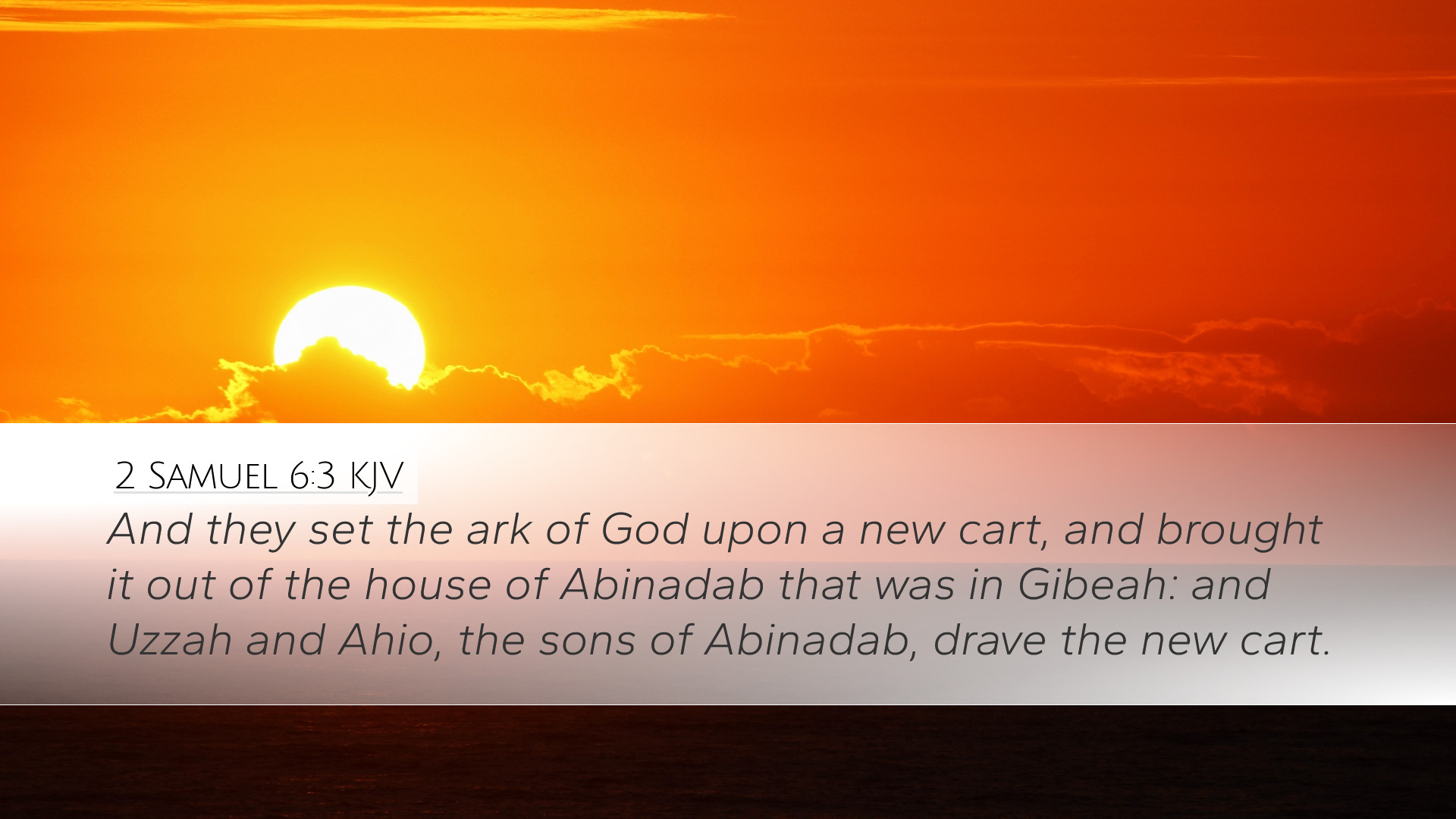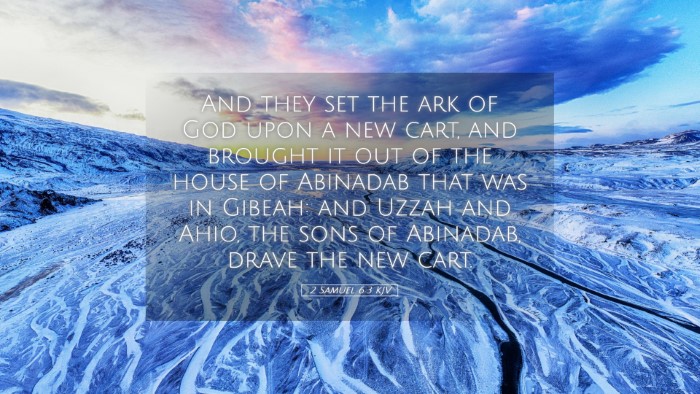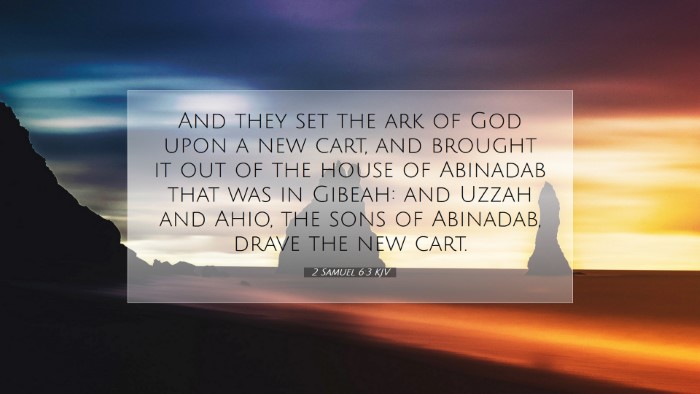Commentary on 2 Samuel 6:3
Bible Verse: "And they set the ark of God upon a new cart, and brought it out of the house of Abinadab that was in Gibeah: and Uzzah and Ahio, the sons of Abinadab, drave the new cart."
Introduction
The passage in 2 Samuel 6:3 lays the foundation for a significant moment in Israel's history - the transportation of the Ark of the Covenant to Jerusalem. This act is not merely a physical movement but symbolizes God's presence among His people. The various commentaries provide insights into the theological implications and the lessons that arise from both the actions detailed in this verse and the subsequent events.
Contextual Background
The Ark of the Covenant, a sacred symbol for the Israelites, represented God's covenant with His people. After being captured by the Philistines and returned, it had been housed in the home of Abinadab for twenty years. The desire to bring the Ark to Jerusalem reflects David's intention to centralize worship and reaffirm the relationship between God and His nation.
Scholarly Insights
Matthew Henry's Commentary
Matthew Henry notes the urgency and the intent behind the transportation of the Ark. He emphasizes that the new cart signifies a human attempt to honor God by utilizing contemporary methods for divine worship. However, this method diverges from the prescribed biblical mandate of carrying the Ark using poles by the Levites.
Key Observations:
- The New Cart: While appearing to honor God, the use of a cart reflects a troubling trend towards innovation absent of divine instruction.
- Uzzah and Ahio: These sons of Abinadab were tasked with overseeing the Ark’s journey, yet their actions demonstrated a lack of reverence for the sacred object.
Albert Barnes' Notes
Albert Barnes emphasizes the historical context and the significance of the Ark's relocation. He points out that although David's intentions were noble, the approach taken reflected a misunderstanding of God’s holiness. Barnes underscores that the Ark should have been carried according to divine law, highlighting that improper reverence leads to dire consequences.
Insights on Reverence:
- Divine Prescription: The prescribed method was vital for showing reverence and respect for God's holiness.
- Desire vs. Method: The actions of David and the people illustrate a significant challenge in maintaining reverence in worship practices.
Adam Clarke's Commentary
Adam Clarke provides a detailed analysis of the implications surrounding the act of placing the Ark on a new cart. He notes that although the intentions behind this decision were likely good, it reflects a broader human tendency to adapt divine practices to fit human preferences. Clarke warns of the dangers of casual familiarity with sacred things.
Major Takeaways:
- Calamity of Carelessness: Clarke discusses the immediate consequences that arise from carelessness when handling sacred matters.
- Lessons in Worship: The account encourages believers to reflect on how they approach God in worship and to adhere closely to His commands.
Theological Implications
The narrative in 2 Samuel 6:3 and its surrounding events remind the readers of the significance of approaching God according to His established ways. Both the intent of the heart and the methods by which we seek to honor God are scrutinized. All three commentators collectively emphasize the necessity of aligning human action with divine instruction.
Lessons for Today
In a contemporary context, the lessons from this verse are profoundly relevant for pastors, theologians, and believers. There is an inherent warning against innovation in worship without a scriptural basis.
- Adherence to God's Word: Every act of worship should be grounded in the truth of Scripture to ensure that it is both acceptable and pleasing to God.
- The Heart’s Intent: The intention behind worship must be complemented by the manner in which it is conducted, reflecting both reverence and obedience.
Conclusion
The transport of the Ark as depicted in 2 Samuel 6:3 serves as a critical study in the relationship between divine sovereignty and human action. As reflected upon in the works of Matthew Henry, Albert Barnes, and Adam Clarke, this passage invites readers to examine the tension between innovation in worship and adherence to God's directives. It compels both scholarly reflection and practical application, urging a balance between heart intent and obedience in the life of a believer.


